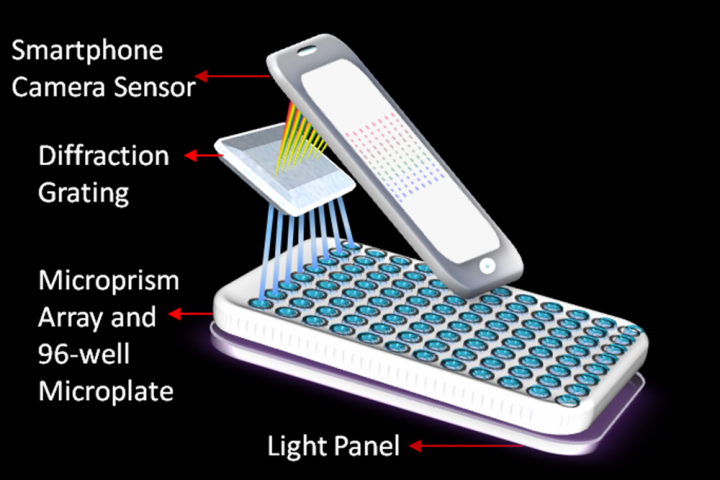
Developed by a research team led by assistant professor Lei Li, the university’s newly developed smartphone spectrometer can detect human interleukin-6 (IL-6), a biomarker closely associated with lung, prostate, liver, breast, and epithelial cancers. It works by analyzing how many and the type of chemicals in any given sample, with the analysis completed by measuring the light spectrum.
What makes this effort stand out from others is not that it is a smartphone spectrometer, since more than a few already exist. Instead, the research team’s effort can either measure up to eight different samples at the same time or one sample across eight wells. This is quite the step up from other
“With our eight-channel spectrometer, we can put eight different samples to do the same test, or one sample in eight different wells to do eight different tests,” said Li. “This increases our device’s efficiency.”
Furthermore, Li’s research team developed a smartphone spectrometer that delivers laboratory-quality results in a low-cost package, thus allowing for an increased number of use cases.
“The spectrometer would be especially useful in clinics and hospitals that have a large number of samples without on-site labs, or for doctors who practice abroad or in remote areas,” said Li. “They can’t carry a whole lab with them. They need a portable and efficient device.”
So far, testing has been limited to standard lab-controlled samples, but according to Li, his team’s smartphone spectrometer has been up to 99 percent accurate with its results. As such, the team has shifted to real-world testing, so the accuracy of these results will be more interesting.
As for compatibility, the spectrometer’s design was tested with an iPhone 5, though Li’s team is working on a version that will work with any smartphone.
Editors' Recommendations
- Look who just replaced Samsung as king of the global smartphone market
- You’re all wrong — 60Hz on the iPhone is fine
- The best smartphone case brands in 2023: the 20 best ones
- The 15 most important smartphones that changed the world forever
- 5 things the iPhone has to change in 2023 before I ditch Android


